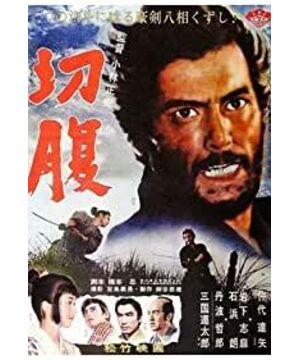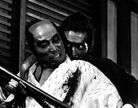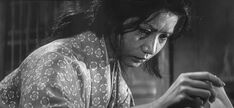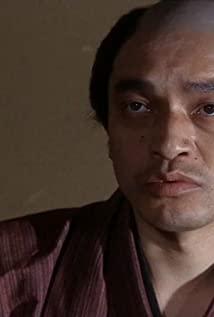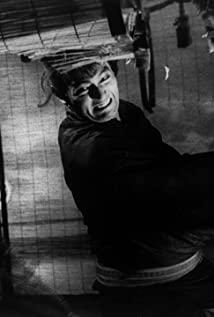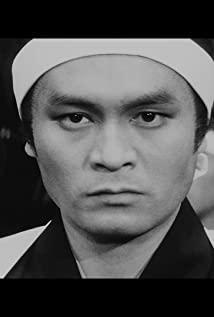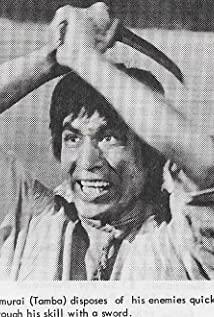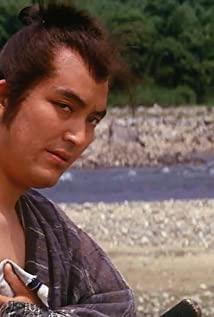Lu Ye
In 1962, Masaki Kobayashi directed a samurai film "Cutting the Abdomen". In 2011, the famous Japanese "post-60s" director Takashi Miike "classic remake", probably for the box office, the title was changed to the less bloody "One Life".
Basic judgment: The new film is good-looking, and it doesn't hurt to watch it. Of course, the purpose of this article is not to "compare the old and new", but to use the "new film" as a springboard to attract attention, with only one purpose: to watch the "old film".
What does "Abdomen" talk about? "Simply put" is this: an old samurai in the early Edo period of Japan called a wealthy family, saying that he was too poor to live, and borrowed a place to end his life. He was persuaded to go away and not to ask for money. Said that a young man came to this set a few days ago, and no one was pitiful, so he watched him cut his belly with a bamboo knife, and tossed him for a long time before he died. The old warrior said that it was his son-in-law. So the two sides fought, and finally the old samurai killed himself. As a samurai, he is not unreasonable.
——After reading the film, you will feel once again that for a great movie, all the "synopsis" is such a correct, hateful and powerless existence. Chua Lam, a Hong Kong cultural celebrity and known as the "Nippon Master", also wrote a short article about "Cutting the Abdomen", but he did not even touch the "fur" of the film, and it was more like using the title of the film to put "in his eyes." "Cutting the belly culture" is introduced to the Chinese as a spectacle, just like the Japanese samurai films that were filmed for Westerners (or Americans) in the "Oriental exhibitionist" style in the two decades after World War II. In the end he said, "It's all good to say, in fact, this is just the last performance of the exhibitionist."
If you haven't watched the film before, and you stay away from the title and introduction, or have been "misled" by Mr. Cai, then please don't go:
First of all, whether it is "Harri" or anti-Japanese, as long as you are obsessed with "Japan", then you should pay more attention to two people than Kenzaburo Oe or Haruki Murakami or Takeshi Kitano. One is the contemporary immigrant writer Kazuo Ishiguro ( The film "Leave a Trace in a Long Day" adapted from his work is a classic example of a literary achievement film), and the director of "Slit Abdomen" is the director Kobayashi Masaki. Although the two of them are "being different from generation to generation", their works are diverse, from gods and monsters to science fiction, but they represent the Japanese discussion on the most vague and always urgent war ethics issues. The height and depth that can be reached. Perhaps Takashi Miike wanted to "pay tribute to his predecessors", but just because he was known for his "violent aesthetics" in the history of movies, he and Masaki Kobayashi "cannot enter the family." If you don't believe it, just look at it. The story of two people is almost exactly the same, and their inner spiritual path is completely different. This shows how complicated, fascinating and a life-long subject worth thinking about humanitarianism.
Secondly, if you are a fan of art films and want to get a "visual feast" and want to be nostalgic in black and white films, you should not be intimidated by the title. It is indeed very bloody scenes like the title, but these scenes are obviously different from the violent aesthetics of Wu Yusen, Quentin Tarantino and Sanchi. We will mainly discuss its profound ethical deposits later. The important thing is that it tells a story that seems to be slow, but it makes you want to stop. It is deep but not dull. The tension in the plot is so different from the Hitchcock-style suspense film. The power of sex is not inferior. Strictly speaking, this is a film that cannot be reproduced. It is not because the author of this article has the habit of thickening the past and the present, but because it is difficult for you to "value" such a good team. Takemitsu Toru's soundtrack-the music master who can be ranked among the top five in the history of film, skillfully introduced Japanese traditional Noh into the world of film, and the rest of the sound still echoes in the hearts of filmmakers until today; Hashimoto Shinobu's script- The exquisite narrative structure of the film is unforgettable; the actors with kabuki-za background, acting skills and postures-the stage scenes of this film give full play to their theatrical skills. The young Tatsuya Nakadai, who later became a national treasure-level actor, played the stubborn and sober old man effortlessly. His rivalry with Sangoku Rentaro, no one in history can match him, and he is tall, handsome, and rarely seen. Tamba Tetsuro, the "samurai" with "international fame", and Shima Iwashita, who is like a hibiscus in the water, (the latter is fortunate to show her simple and profound acting skills in this film. You must know that "a masterpiece is rare again", to 70 In the ages, she could only apply fat and powder in boring gang dramas)...In addition, the exquisite editing, the keen sense of light and shadow, and the exquisite martial arts scenes deserve to be appreciated frame by frame. Simple and traditional props convey strong Symbolizing power... In short, the best directors, scripts, actors, musicians, and photographers fit in with each other in their best conditions. All of these need "karma". If you don’t watch the "old movies", you would think that Takashi Miike and his actors are also top-notch. Now, you will find that they have used too much force and the pubic area is empty, so that "Yi Ming" can only become a "cartoon" of "Cut Abdomen". Version".
Again, "Cutting the Abdomen" was never intended to be shown to foreigners, even though the old American director headed by Melel took a lot of things from it stealthily. In such an overbearing media form of film, it is rare to be quiet and restrained.
In short, when it comes to Japanese art movies, you only have the noisy Akira Kurosawa, the sticky Nagisa Oshima, and the "Shimizu No Fish" Ozu Yasujiro in your mind. Now is the time for you to update the list. Masaki Kobayashi, like all true geniuses, is too good and lacks successors, so that second-rate filmmakers like Kurosawa Akira and those samurai films that are lengthy and full of dazzling skills have become Japanese movies recognized on the international stage. , Or the Japanese "art" label.
...
"Introduction" is over. If we want to convince you, we still have to start with the "synopsis" that almost omits everything.
A samurai wants to borrow someone’s place to commit suicide. What is going on? It is necessary to briefly review the history of Bushido.
As we all know, the samurai class and its "dao" are the keys to understanding Japanese culture. From the "Phantom of Japan" by the Greek and Japanese fan Koizumi Yakumo during the Meiji Restoration to the "Three Books of Japan" jointly composed by the Americans and the Chinese, for Japan, the "foreigners" I and other "foreigners" wrote the most "skin-conscious" of Bushido, The most divided is also Bushido. The same is true for the Japanese themselves: from Akira Kurosawa’s "Seven Samurai" to today’s popular animated film "Gintama", from Akutagawa Ryunosuke’s mocking "Tadashinzo" to Mishima Yukio’s leisurely reading of "The Book of Leaves", Bushido The "return" behind the culture and its parody and parody is a complex that they can hardly extricate themselves from going around. If you pay more attention to the subtitles of early Japanese movies, you will find that many of the active film actors in the 1930s and 60s came from "Kabukiza". That's because before the film was born, showing the spirit of Bushido and the heroic men and women of Edo Ukiyo was an enduring theme of theatrical forms such as Kabuki, Noh and Kyogen. Therefore, it is only natural that the theme of Bushido was at the core of the Japanese film’s inception period, and the conditions of the world/market were finally developed into what is loved and heard in today’s popular Japanese culture after being inspired by Kimiro Narai and nourished by Yasujiro Ozu." Healing".
The so-called Bushido, to put it simply, is "absolute loyalty" based on the relationship between master and servant. From the etiquette of every move in daily life to the indifferent response of life and death, they all reflect this belief in "Tao". Since ancient times, "loyalty and filial piety" has been a vertical moral system used in the rule of the world and serving the emperor, while "honesty and faith" are horizontal. Singer Shinji Tanimura composed the song "Fairy Flower Biography" for the Japanese "Three Kingdoms". ", there is a sentence in it, "People are defeated by faith, and people are born by faith." This is the reliance of people as "people" in troubled times.
A samurai who belongs to the "vertical axis", if he loses his master, he will become a ronin. In the feudal vassal struggle in the early Edo period, many lords lost their lives, the feudal titles were cut off, and the samurai under the sect had to be scattered with birds and beasts. If it is a "right" withdrawal, there is no alternative. If it is caused by private enmity, according to the "Tao", there is a need for revenge. The "Loyal Minister Zang", which the Japanese will never tire of and will die every time they see it, is the story of the 47 ronin's revenge for their masters. It is a necessary topic for discussing the public and private messages of the Japanese. However, regardless of revenge or not, we still have to live a life first. The samurai is "slow in paying tribute", and it is difficult to "follow the customs." Once the owner is lost, the situation is often worse than that of the traffickers and pawns. Moreover, the Warring States has passed away, and local political struggles cannot be called "troubled times." Relying on "faith" to unite and reunite has become a kind of utopian. So someone did the opposite: use the "dignity of a samurai" to cheat money.
How to do it The first shot in "Abdomen", like an "appearance" on theatrical stage, is a series of samurai armor. At that time, every prince's family, in the most secret and noble room in its deep residence compound, was bound to enshrine such armor. It is not only an ancestor, but also a symbol of the soul of a warrior, and at the same time a guarantee of "faith" in troubled times. For Kobayashi, this armor is the focal point of the conflict in the film, the focal point of the entire lens mapping, and the focal point of ethical topics. Because it is the first testimony of "Bushido": the soul of the family is in the "Tao", and all the samurai are one family in the "Tao". Therefore, if someone proposes to use the rigorous and clean land of the family, it will not be worthy of the samurai's self-respect. If you die, the master cannot easily refuse. However, Ronin has actually been expelled from the samurai class, and there is a hidden sense of power struggle among them. Naturally, the big family cannot allow their "dirty blood" to tarnish their noble blood. In a dilemma, he paid for it and went away.
When the young Ronin Qian Qianyan pleaded for a daughter to come to the ancient and majestic Jing Yi's house, he was just imitating the "predecessors". However, the overwhelmed big family decided this time to kill the chickens and the monkeys: they really wanted to meet his "requirements."
I was expecting to see the elder (general name of the chieftain of the retainer) seeking a half-office job. Hearing the news that "abdominal cutting is allowed" was like a bolt from the blue.
At this point in the story, the audience's identification will be obvious: For a samurai, the behaving girl is too bad. This white-faced boy was complacent first when he recognized that he was appreciated, and then panicked. When he saw no hope of escape, he begged for "a day or two of grace" and he would definitely come back (naturally, who can believe he?). When the samurai of the Ii family had a final discussion in the inner house, they found out angrily that the samurai that should be regarded as the life of every samurai was just a bamboo knife that "it’s hard to cut tofu." .
So, cruelly, but not unreasonably, the girl was asked to use his own knife to cut her belly. In the solemn open space of the white sandy atrium, the long and tidy Japanese-style house promenade as long as the Kabuki stage ikebana was filled with samurai retainers watching the ceremony. Here is a reminder that Senchiiwa's request for a woman to cut her belly was spoken by the old Ii family (played by Mikuni Rentaro) to scare off the protagonist of the film, the old samurai Tsumo Hanshiro played by Nakadai Tatsuya. Therefore, the audience of this film, the "watchers" of Jing Yi's family, and the hosts and guests who are telling and listening to the story, "saw" this long scene in their respective "situations."
Before the bloody scene was staged, it had to be turned off for a while.
When it comes to Bushido, the first thing that comes to mind is "cut belly". Japanese samurai are notorious for their "love" to cut abdomen, and even the "Ye Yinwenshu", which is equivalent to the "Bushido textbook", writes that samurai live to cut abdomen. Affected by the secularization of Buddhism Tantra, the samurai believed that the human soul was hidden in the abdomen. At least, in many Japanese literary works, Japanese samurai often have abdomen cut due to a little incident, and their "neurotic" has reached the point of heinous. But how many people actually cut their belly? Except for the tragic and short-lived special cases of the death of General Nogi Nogi Nogori of Emperor Meiji and the post-war writer Yukio Mishima's dramatic "uprising and abdomen" according to the plot in his novel, since the Edo period, The story of cutting a knife longitudinally and then transversely to the abdomen between talking and laughing, and then beheading the head and falling straight forward, is obviously not believed by the Japanese themselves. There is a story in the famous contemporary Japanese TV series "Wonderful Stories of the World": American businessmen went to the Japanese branch on a business trip and were frightened by the "cut belly culture" of the company boss. The self-demonization of the Japanese has created many imaginary or real, romantic or dirty stuffings for the subject of cutting abdomen. It’s the nature of the Japanese to make things funny about yourself, or madness.
These "digressions" are a springboard, and they are the premise for us to understand the "cut belly" scene in Kobayashi's film, which is actually only shown once. In this "wolf is coming" story, what is important is to make the audience feel the shock that Chichihara's daughter encountered , first of all, it represents the "common sense" of the entire Japanese audience. This shock not only belonged to the unlucky young man, but also belonged to the "audience" who witnessed the Jing Yi family who saw him cut his belly with that bamboo knife. Sawagata Hikokuro (Tamba Tetsuro), who served as the wrong person for the courtesan (the person responsible for cutting off the head after an abdomen is usually performed by an experienced samurai), Yoshitsune Sawagata (played by Tamba Tetsuro) sternly mocked the courtesan: that kind of standard The method of cutting abdomen has been declining, but, with such courage, you can definitely complete the ideal abdominal cutting! ——In other words, if Qianqianyuan asked for a daughter, he would use a bamboo knife to perform a "full set" of "cross-cutting."
We must understand that the "cut belly" of "Bushido" as a culture is different from real death. It is aesthetic and symbolic. However, in front of the girl, it was like the raindrops on the window suddenly magnified into a flood that flooded the entire world. Just like Antonioni’s famous film "Zoom", the photographer suddenly photographed murder in the lens: real, physical His death broke through the closed system of "culture" and also broke through the movie screen-this is a situation similar to a short-circuit. This impact can only be conveyed by highly refined film language.
The girl died without dignity in extreme pain.
Just "cut" it once is enough. It's not because we can't bear too much blood, but because it will be recalled more than once in our own viewing process. What cannot be reflected in the "Introduction" at the beginning of this article is that "Cutting the Abdomen" is an extremely sophisticated "reversal movie": after the reversal, it advances layer by layer, turning all the plot directions one by one. The wonderful thing is that this reversal is not done by clumsy methods such as "flashback", but by thoroughly manipulating the audience's psychology of viewing the movie.
The story of the elder was finished, and he thought he could scare off the old samurai, but the latter was unmoved. Jin Yun said that he is different from Qian Qianyan's begging for a daughter, he is here to cut his belly. So they came together to the courtyard where the begging girl died.
A similar scene appeared: the afternoon sun, the pure white sand, the retainers sitting around, everything was quiet. The difference is that the old samurai Tsuun Hanshiro's shabby clothes, a sitting body, a calm expression, the old paper-like face of the Ii family, and a solemn, tense, volatile atmosphere. Both the host and the guest are actors who can withstand the "big close-up", and those silent, controlling movements make the entire space breathless.
Jinyun asked the famous samurai Sawagatahiko Kuro who asked for a fault to come to tell him the fault. The choice of the wrong person is also an important part of the abdominal incision ceremony. The family elder agreed and sent someone to summon Sawaxata, but he was "ill". So Jin Yun asked for another one by name. While waiting for the wrong person to arrive, he asked the elder and the samurai attending to listen to his story.
Thus, you will learn that the tragic death of the begging daughter is Jin Yun's son-in-law. However, the mystery uncovered is not only this level of kinship, but also a question of "ideological character": seeking a girl is not "humble". Fukushima, the owner of Jinyun's family, lost in the power struggle of the Tokugawa government. The whole family was reduced to ronin and poverty and sickness. In order to support the family, the begging daughter had to quietly sell her beloved saber. For his critically ill wife and children, he thought of the "now popular" method in despair. He concealed his whereabouts and promised his wife and father-in-law to return for a long time.
So, naturally, the over-rendered "bamboo cut belly" scene took on a new meaning: we immediately recalled his "begging for mercy": what he said was true. That day, Jinyun and her daughter waited for a long time, and in exchange for the corpse of the young man who died tragically. The begging wife Miho (Shima Iwashita) lifted the white cloth covering the face of the corpse, and the camera shot back to a close-up of her lifeless face. Then, she stood up, staggered, and rushed on the corpse, sending out a beast. The same wailing—voices and faces added to the corpse, together with the scene of begging the woman to bite off her tongue in the abdomen cut scene, brought us a multiplying pain. The strong shock enveloped us, and the excuse we subconsciously sought when watching such a bloody scene is now completely shattered. Don't forget, we once shared some kind of moral victory with the condescending onlookers of Jing Yi's home. Now, the horror and a trace of pleasure caused by "cutting abdomen" deep in our hearts start to make us restless!
Still more than that. The story of the old ronin was interrupted several times in the process of telling: the old man was "impatient" to listen to the story: in fact, he had discovered that Jin Yunhui was a dangerous person who damaged the reputation of Jing Yi family, and he just wanted to get rid of it as soon as possible This person. However, the second and third wrong person did not come either: they "coincidentally" fell ill on the same day. The old man smiled and said, why didn't they come?
Jin Yun actually told the story "two-thirds under the iceberg" told by the family elder: It was the three arrogant retainers of the Jing Yi family who transported the corpse of the begging woman to his family at that time, who were summoned by the old ronin one after another today. warrior. The reason they "cannot come" is because Jinyun has already challenged them one by one in private, defeated them, and cut off their hair. For a samurai, this is no different from beheading. When Jinyun threw three hair buns contemptuously on the white sand, when he recalled those wonderful "killing formations", we realized that the awe-inspiring samurai who killed the girl before is the real one. "coward".
At this point, it seems that the truth has become clear: If Bushido has a standard, then its ideal image is obviously Tsumo Hanshiro: high martial arts, good morals, humane, and really not afraid of death. In the film, for the sake of family decency, it is obviously a big family like Jing Yi who is ruthless and selfish. Righteous and evil are opposed, and black and white are distinct.
However, if the film stops here, it is just an ordinary moral admonition story. What Kobayashi wants to share with the audience is not so, but a question and confusion from the bottom of his heart, an ontological question: What is "Tao" on earth?
This question belongs to Tsumo Hanshiro, Kobayashi himself, and also to "post-war Japan."
In the trend of post-war democracy in Japan, this question is of great significance: the responsibility for the war is transferred to certain first-degree war criminals and the older generation. "We young people" are just being used because of ignorance. The main participants in the war and the generation born after the war were actively involved in the student movement, rebelled against their fathers, and envied China’s "Cultural Revolution". At the same time, they quickly cast aside the shadow of the war and began to look forward. ——Japan ushered in an era of rapid economic growth after the war. In Ishiguro Kazuo’s novel "Ukiyo Painter", the old painter “supported militarism” before the war, and when his daughter encountered difficulties in a blind date, he at the same time suffered huge and silent condemnation from his loved ones and those around him, and became a daughter. After successfully married, he could not even find anyone who had admitted that he had "condemned him." He wondered alone, why do people give up easily after dividing the problem into black and white?
This problem is also Kobayashi's problem. After the war, many different Bushido movies appeared in Japan. Mishima Yukio used "Bushido" as a "mask" that hesitated and stopped, and made Westerners fall into the clouds. Although Kurosawa Akira has his ethical pursuits, he is full of orientalist fans in the form. Si's "Japanese Shakespeare". Neither the spectacle nor Mishima's "masked confession" style of samurai movies do not have Kobayashi's deep recognition and doubt. For him, the question is not "good samurai or bad samurai", or "whether desire is good and practice is bad", but "what is a samurai itself". To answer this seemingly abstract question, we must return to the two important props of the film: knives and armor.
Through the luxurious camera movement, the emphasis on close-ups, and the music's regulation of rhythm, the ancestral armor of Ii’s family and the bamboo sword of courtship make the audience feel that they seem to be a symbol of "true and false Bushido". As mentioned above, armor maintains horizontal and vertical morality and represents the absolute truth of Bushido. The image of the saber is much more complicated. Its "representation" in the film is not only the bamboo sword for the girl, but also his real sword that was sold off, and the real blade that Jinyun Hanshiro never left his hand. They are a symbol of the dignity of Weng and Son as "samurais". And dignity is associated with the film's deepest ethical feeling: shame.
The body of the girl and the desperate face of his wife made us feel that the scream of the flesh was so terrifying that in the mansion, the two "storytellers" of the guest and the host were fighting for its shocking effect. When the truth is revealed step by step and the confrontation between the old man and Jinyun becomes more and more fierce, you will realize that this is a court movie dressed in a samurai coat: surrounded by observers on the white "law field", Ii's family Wazunun Hanshiro (representing his tragically deceased daughter, son-in-law, and grandson) conducted a harsh "court debate." The focus of their argument is: who should be ashamed?
In order to "cover the ugliness of the family", the old family accused Jin Yun one step at a time: "Your dishonesty behavior is becoming more and more intolerable... You never intended to die, for the money guy!" "Liar!" Jin Yunze Express his contempt with laughter. He said that he was ready to die calmly at any time, but he had to ask for an "argument." He was "ashamed" for the absurd rule of the shogunate, for their war that led to the displacement of countless people, and for the proud and hypocritical Ii family in the greenhouse. However, what really embarrassed him was that he was ashamed of himself . He said: "You don't need a warrior in a peaceful era. For the past eight or nine years, this kind of life has made me feel ashamed."
Jinyun's "shame" is the "self-effect" of Bushido. Although it is not your fault, losing the master is inherently a shame for the samurai. He should have been martyred to the Lord, but "survived", based on the trust of the two warriors-the master and friends. His like-minded friend Qian Qianyan died, but left his fifteen-year-old son to ask for a daughter to be alone with him. Then there is the humiliation of the poor life. The survival problems of the next generation are closely related to the reality of survival. You must know that maintaining integrity and being poor is another symbol of Bushido. How to reconcile these two things that belong to the "Tao"? Jin Yun was really confused.
The girl is equally confused. Please recall his death again: begging for "grace for one or two days" was rejected. After being completely desperate, the begging woman who had no longer told her to explain without saying a word suddenly violently broke the wooden table with bamboo knives and tore it down. Jacket, pounced on the bamboo knife. It seems that the performance of begging for a girl is nothing more than the venting or courageous behavior of the desperate. However, facing the substitute of the real knife that he was punished, his fierce action always contains a kind of self-punishment. Jinyun once imagined how painful his son-in-law pawned his saber: he failed to find a job in the market, and walked out of the pawnshop into the wilderness. At this time, you will feel that in the forced abdomen cutting behavior of the girl, there is a real "self-defeating", a kind of "identification" to his punisher Jing Yijia! Because, despite the indispensable reason, asking for "money" is always a shame for the samurai.
The tragic corpse of Qiongnuo was also a corpse that was humiliated. It was a corpse that considered herself ashamed. In the end, it was the loyalty to "Tao" that killed the posthumous children of "Tao". How to comfort the pain of the living and wash away the shame of the dead?
On the white sand, the two sons and Weng who look like mirror images, the common thorns in their souls are the "shame of the samurai." Jin Yun, with the soul of the girl, did not come to Jing Yi's house to provoke, but to "reconcile". Although he laughed at them and despised them, he had a kind of "identification" for them in his heart. In front of the son-in-law's unbearable body, although he painfully blamed his dedication to the saber: "When he (women) abandoned it for the family, I was obsessed with useless things...", but he never Give it up. Even when he learned that his grandson was sick and asked his daughter if he was helpless, he subconsciously held it. Not only that, he also used this knife to chop off the "noble buns" of three invincible warriors, and took it to Jingyi's house to fight back.
At this point, we are simply unable to determine whether the "true blade" of this father-in-law and father is the defection of the "real" Bushido, or the victory after the "double negation" of the "Tao"? And the true blade of the girl who was exchanged, is it the eternally lost "warrior true meaning" or the equivalent of "humanity"? Is Bushido being sublated or abandoned? In other words, what gives dignity to the girl and his dead family is not a question that can be easily answered. In this sense, Jin Yun, who had lost everything, went to Jing Yi's house to die with the sting of the question, rather than the pre-determined answer.
The old samurai instinctively felt that there was no way to exclude some of the so-called "fake Bushido", such as the arrogant Ii family, from the "real" Bushido. He promised to cut his belly, on the premise that he wants to be comforted by "Tao"-"A samurai, giving up his dignity, and asking for money, there is a reason in any case, why can't I listen to him?" "I can't go to see the dead with empty hands. Relatives, even a good word will make Qian Qianyan happy for her daughter."
He was actually pleading . The so-called humanity and kindness should not be anything other than Bushido. A samurai is a "person" who can feel physical pain, have family troubles, and various reasons. Jin Yun warned the retainers who were seated like woodcarvings and stone carvings: If you don't realize the value of "flesh" for the survival of the samurai, "my today may be your tomorrow."
What Jin Yun really wanted was the acknowledgment of the "armor" sitting quietly deep in the house. In short, only those who inflict the humiliation can wash away the humiliation. And he himself, no matter how firm and noble, there is always an "empty" in his heart. In the end, he recognized "Bushido", whether it was real or fake.
As expected, his "metaphysical" request was rejected. In the final narrative paragraph, the film once again showed a classic scene in the samurai theme-"Killing Array": Jinyun is an enemy of the crowd, in the ancient In the mansion, fought a magnificent battle with all the samurai of the Ii family. If Tsui Hark’s "New Dragon Gate Fighting" is a masterpiece that achieves exquisite scene scheduling in a narrow, three-dimensional floor space, then the killing battle in "Slitting the Abdomen" is a classic leisurely classic in a soothing, flat Japanese space . This killing array is not just for beauty. As mentioned earlier, the abdomen is considered to be a sacred place where people’s fundamental consciousness is parasitized, and cutting the abdomen is a complete death—a complete loyalty. Jinyun's entry into the maze-like Ii family mansion is also a symbolic "cut belly" to the "Bushido" itself. When Bushido needs to answer its own questions, what it faces is its own "image": armor.
The symbol of "Tao" sits quietly in the depths of the mansion, approaching it, encountering it, and torturing it. This is the core function of this gorgeous "killing formation". The space setting of the mansion is ring-shaped-it is a mouth and a stomach, which means siege and digestive danger, but it causes an impossible "encounter": Jinyun Banshiro destroyed one white paper door after another—— Constantly shortening the hierarchical distance between him and the idea, when the opening captions appear in the film, the camera shows us overlooking the mysterious old house of Jing Yi family, and now it is slowly being lifted in this battle.
It is in these battle scenes that Jin Yun is more like a hero. The sword in one hand, the big characters with one hand and the one-shaped body movements are the key nodes to control the rhythm of the whole battle. It is not only the king's momentum, but also a part of sword skills-isn't this the "real" Bushido ?
So I said, this is a good movie. It allows you to identify with a certain image time and time again, and then... the long shots and the close-ups are alternated, and the protagonist is brave and tenacious in the unhurried editing, with our hearts cheering and encouraging until the wounded old samurai. When he smashed through a paper door and suddenly faced the front of the majestic armor, everything seemed to stop suddenly.
This is one of the most exciting pros and cons in film history. Only a few seconds. Great close-up. Jin Yun's face, "Armor" face. Jin Yun's face seemed to be smiling but not smiling. However, his unstoppable "destruction" was suddenly messed up after that. The warriors broke into the door, Jin Yun threw himself on the heavy armor and dragged it off the stage. His actions seemed to be cumbersome, he seemed to take it as a "hostage," and he seemed to be resisting it again. However, a few shots were fired (the gun was finally "in battle"), and the battle came to an end hastily.
The meaning of this pros and cons is laid and accumulated layer by layer in the film. At that moment, the power of narration is the breaking point of ethics: the armor is the first shot at the beginning of the opening song, and it echoes the beginning of the feature film. , Jinyun stands outside the tight gate of Jing Yi's house. Since then, everything has been decided: at a special moment, they will meet.
It is this "meeting" that reveals the core mystery of the film ontology: the justice and ambiguity of image representation. It makes Jin Yun's already unfolding "spiritual victory" and his recognition from the audience become a question. In the direct confrontation with "Tao", he lost more than he expected, that is, the power to question and deny. The eye socket of the armor was empty, and it bounced back all the questions.
This is why we cannot talk too deeply about "metaphysical" issues in reality. When you ask "Japan, why don't you repent", you may find that this question will also be bounced back by something unknown. "Cutting the Abdomen" provides an example to illustrate the danger of this question: if you encounter directly with the idea on which you live, you will end up in the same way: he died tragically, without an answer, and Completely disappeared. Ii's family cleaned up the mess, letting the three samurai who couldn't get out of the door cut their abdomen, just as they did so well to cover up the death of the girl. On this day, Jing Yi’s family tree wrote: Sunny, fresh fish was delivered to XX in the morning.
When everyone chanted "anti-war", Kobayashi shot "Ghost Story" based on Koizumi Yakumo's ghost novels and the great documentary "Tokyo Trial", as well as this "Cutting Abdomen". He is a nonsense director. Irony does not appear when you have to gag, but when you face your heart sincerely. Before forming a kind of ultimate skepticism, Kobayashi left no room for himself. The real pain is not those that hit you happily, but those that are nameless, unrecognized, and what you feel when you have to use a bamboo knife to cut into your body. If the author's movie is not a myth, then it means that whether the image is an ancient monster or a modern soldier, there is something stable in it. For Kobayashi Masaki, that is really how we think about the pain of ourselves and others.
View more about Hara-Kiri reviews


